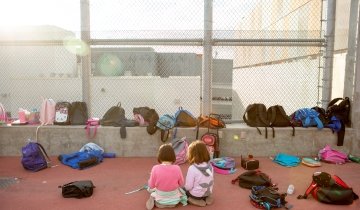Traditionally, homeschooling in America has been preferred by families that wanted a more concentrated, individualized approach to education or perhaps sought to incorporate religious views into their curriculum.
However, recent data suggests that homeschooling may now be a desirable alternative for historically marginalized populations that do not feel supported by their schools.
For the period between 2019 and May 2021, the U.S. Census Bureau reported that the population of homeschooled children nearly tripled, with large increases for Black, Hispanic and Asian* students, and a more moderate jump for White students.
While the pandemic played a role for many families who recently began homeschooling, some cite concern about racial disparities.
For these families and others who have anxiety over their children’s experience at school, how might schools create more inclusive and supportive environments for students of color?
Engage students and teachers on racial equity
In the wake of George Floyd’s murder and the controversy around critical race theory, race has become an increasingly delicate issue in schools.
However, advocates of racial equity say that incorporating race into curriculum and discussing it with students creates a more well-rounded education, and can build a sense of trust in school among minoritized students.
Additionally, providing in-depth training for teachers on equity may help prepare them for facilitating lesson plans and class conversations.
Repair school infrastructure
Urban schools often suffer from infrastructure problems. Issues range from the need for basic upgrades to mold and a lack of heat in the winter.
Providing students with adequate learning spaces helps them see that their experiences are just as valid as those of students from wealthier districts, said Alejandro Diasgranado, 2021 Washington, D.C. Teacher of the Year during the U.S. Department of Education’s Equity Summit Series.
The pandemic also creates an immediate need to improve ventilation. Urban schools typically lack the resources for major repairs, though some districts are tapping American Rescue Plan funds to address infrastructure.
Expand Communication Efforts
Families who choose homeschooling over concerns about race may feel like their voices are not heard by schools.
By increasing communication with parents, schools can refine their understanding of families’ needs. Teachers may want to expand discussions with parents to learn more about how students are doing outside of the classroom. Leadership can also create more opportunities to receive feedback.
Incorporating feedback, whenever possible, can strengthen relationships with families.
*Data recorded between 2016 and May 2021




